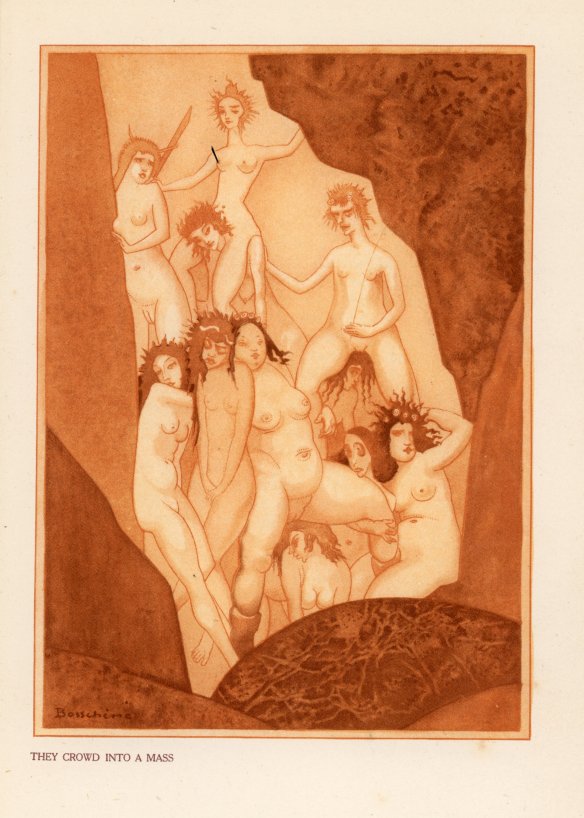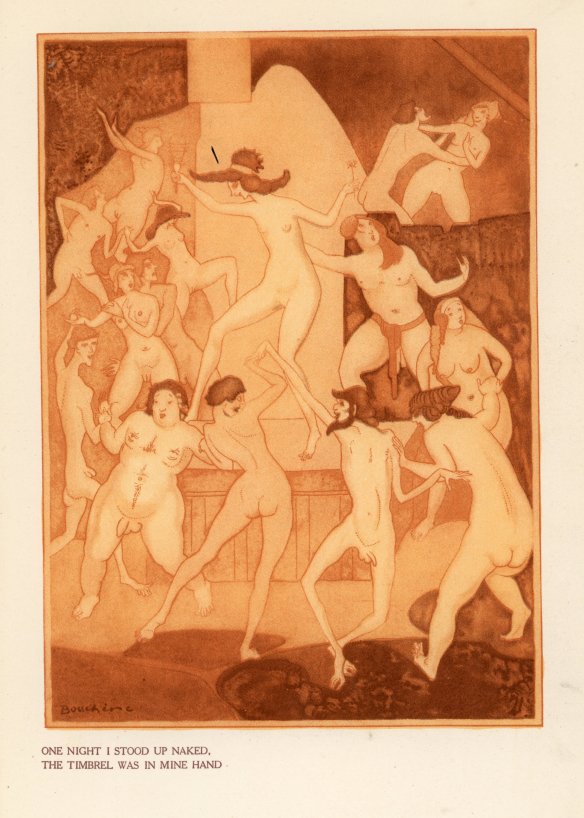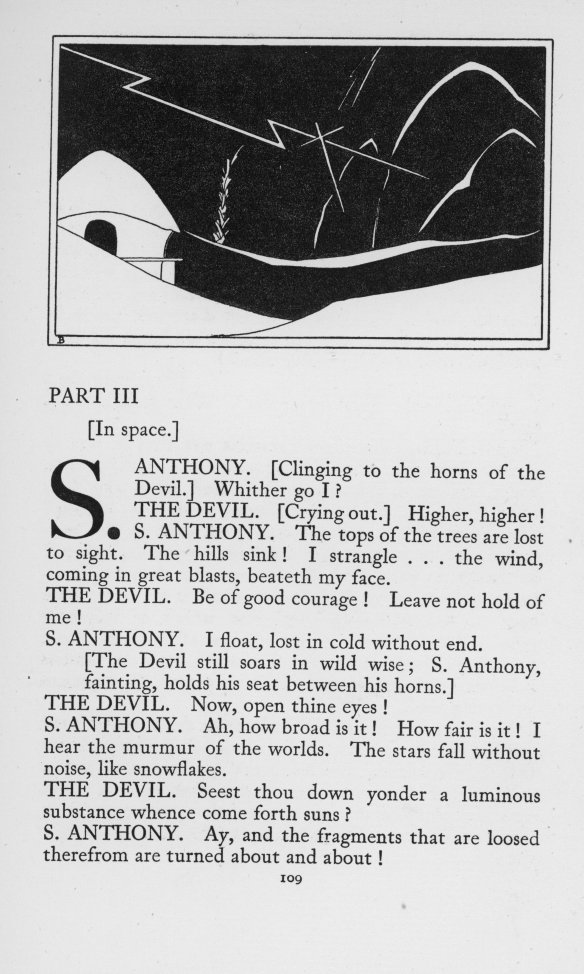Much of my day was devoted to this post on ‘The First Temptation of Saint Anthony’. I flagged up this book by Gustave Flaubert which I finished reading yesterday as today’s subject.
I am indebted to https://st-anthony-the-great.org.uk/st-anthony-the-great/
from which, in order to set the scene for this work I have gleaned the following extracts:
‘St. Anthony the Great or Antony the Great was a Christian saint from Egypt’ whose biography was written by St. Athanasius of Alexandria.
He was ‘the first known ascetic going into the wilderness (about A.D. 270–271), a geographical move that seems to have contributed to his renown. Accounts of Anthony enduring supernatural temptation during his sojourn in the Libyan Desert inspired the often-repeated subject of the temptation of St. Anthony in Western art and literature.’
‘Anthony was born in Coma (or Koma) near Herakleopolis Magna in Lower Egypt in 251 to wealthy landowner parents. When he was about 18 years old, his parents died and left him with the care of his unmarried sister. Shortly thereafter, he decided to follow the words of Jesus, who had said: “If you want to be perfect, go, sell what you have and give to the poor, and you will have treasures in heaven; and come, follow Me.”,[Mt 19:21] which is part of the Evangelical counsels. Taking these words quite literally, Anthony gave away some of the family estate to his neighbors, sold the remaining property, donated the funds thus raised to the poor, placed his sister with a group of Christian virgins, a sort of proto-monastery of nuns, and himself became the disciple of a local hermit.’ ‘Saint Anthony decided to follow [the hermitic] tradition and headed out into the alkaline Nitrian Desert region. Here he remained for some 13 years.’
‘There are various legends associating him with pigs: one is that for a time he worked as a swineherd.’
‘According to Athanasius, the devil fought St. Anthony by afflicting him with boredom, laziness, and the phantoms of women, which he overcame by the power of prayer, providing a theme for Christian art. After that, he moved to a tomb, where he resided and closed the door on himself, depending on some local villagers who brought him food. When the devil perceived his ascetic life and his intense worship, he was envious and beat him mercilessly, leaving him unconscious. When his friends from the local village came to visit him and found him in this condition, they carried him to a church.’
‘After he recovered, he made a second effort and went back into the desert. There he lived strictly enclosed in an old abandoned Roman fort for some twenty years…… The devil again resumed his war against Saint Anthony, only this time the phantoms were in the form of wild beasts, wolves, lions, snakes and scorpions. They appeared as if they were about to attack him or cut him into pieces.’
There is more detailed information on the quoted website.
My copy of the John Lane The Bodley Head edition of 1924, limited to 3,000, is number 1,433. It was given to me 1n 1976 as a farewell present from a Social Work student on completion of her placement.
Unusually, I will begin by complimenting the translator René Francis on his exemplary rendition of the flowing, descriptive, prose which, although I have not read the original, I recognise as the hallmark of the great French novelist whose ‘Madame Bovary’ and ‘L’Education Sentimentale’ I have read in his own tongue.
The title ‘The First……..’ indicated that this is the author’s initial, and considered most successful, version of his dramatic tale. This is explained in E. B. Osborn’s lengthy and scholarly introduction. The manuscript was completed in 1848. Flaubert suppressed a number of fragments when the work was first published in 1856. He struggled with conflicts about it until a second version, from which, the life itself is acknowledged to have been expunged. The Bodley Head publication follows the early manuscript and, along with useful notes, includes appendices of the eliminated sections.
It is most likely that Flaubert is using the story of the ascetic saint as a vehicle for his own conflicts. The luscious, stylised, illustrations of Jean de Bosschere indicate a rather more explicit imagination than that which the writer has allowed himself.
At regular intervals throughout the volume we have colour plates protected by clear tissue;
other full page images are produced in black and white,
as are the smaller ones embellishing the text. As usual I have reproduced these whole pages.
This evening we dined on lean ham baked in a nest of bright orange butternut squash and a trio of differently coloured baby carrots; roasted potatoes in onions; piquant cauliflower cheese; and tender runner beans, with which the Culinary Queen drank Hoegaarden and I drank Carinena El Zimbado Garnacha Syrah 2017.















































That’s not exactly easy, sitting by the fireplace, reading, Derrick. More power to you!!
🙂 You do know where I do my reading, GP – but not all the rest of it which takes place at the desk. Thanks very much.
The illustrations are fascinating! Things born of human imaginings. St. Anthony had a hard life. Joni Mitchell has a line in one of her songs about “the simple life of heroes, the twisted life of saints”. I can’t remember the title.
Thank you very much, Lavinia. I tried to find that Joni Mitchell song on YouTube. “Twisted” was the nearest, but I don’t think that’s it.
I found it. The song is titled ‘Priests” and was actually written by Leonard Cohen. I’m finding the Judy Collins version of it online, but not Joni’s. Here is the song story and lyrics:
http://www.song-bar.com/song-of-the-day/judy-collins-priests-by-leonard-cohen
Well done, Lavinia. Thanks again
Crikey! I’m pleased to note I won’t have to read that book – this was enough for me 😀
🙂 X Thanks for that, Pauline.
Me too!
🙂
We are clearly illiterate heathens 😀
I promise to take him out today, even if it is only a wet pony I think that we will all sleep a little better tonight!
🙂
What a treat both visually and textually. I had to check up on the Circoncellions as they sounded so improbable.
Thanks very much, Tootlepedal. I imagine your current lack of comments boxes is on account of your being in London.
I hadn’t thought of that.
Those phantom women will get you every time. 😀
🙂 Thanks very much, Joseph.
A thoroughly fascinating share Derrick, and superbly presented … thank you…
Thank you very much, Ivor. I know you appreciate these.
Yes Derrick.. very much…
Derrick, This is very beautiful. I loved this post.
Thank you very much, Micheline X
The conclusion is astute. Eye-popping artwork of Jena de Bosschere (Remember Stanley Ipkis of ‘The Mask’ fame) proved turned out to be an immersive trip.
*forgive the phantom ‘proved’.
🙂
Thank you very much, Uma. Actually, not being a Jim Carrey fan, I haven’t seen the film, but liked your allusion.
These illustrations are simply fantastic, Derrick; I thank you for sharing them. I couldn’t help but think of Bosch’s eponymous painting which depicts St Anthony the Hermit yet very little of temptations. These illustration offer an exquisitely executed insight into the actual temptations.
Thank you very much, Dolly. The book was certainly a special gift.
My pleasure, Derrick. I would have loved to have this book, if only for illustrations!
🙂
My goodness, the Pickwick Papers are going to be a breeze after this. What a fantastic array of illustrations you have shared with us – thank you!
Thanks very much, Anne. 🙂
Looks like a major but good undertaking!
The illustrations are wonderful! Love the use of the primary colors in some of them…the shapes, lines, etc., too. And the pen or pencil drawings of some of the other illustrations are great in detail.
HUGS!!! 🙂
Thank you very much, Carolyn X
Blimey! I’ll have to go and have a lie down after all that.
🙂 Chuckle, John. Thanks very much.
Taking him out today! can’t be doing with that again!!
🙂
Oh my word!
🙂 Thanks very much, Jill
Will you balance out your reading with something a little lighter this afternoon? Ha! Truly a fascinating look at St. Anthony. And those illustrations—dang!
🙂 I’m on Pickwick Papers now. Thanks very much, Cheryl.
Apart from a mention or two of the Athanasian Creed (now generally agreed not to have been the work of Athanasius, anyway) I haven’t come across that fellow in years. I didn’t realized he’d written a bio of St. Anthony. It tickled me to see this list of temptations: “boredom, laziness, and the phantoms of women.” It seems that boredom and laziness are harder to portray than women!
Insightful comment re a male artist, Linda. Many thanks
Quite a book. I wonder what the sister thought about her placement.
I hope she was better pleased than Jackie was when she read it. Thanks very much, Laurie
Wow. Stunning illustrations.
Thanks very much, Leslie
Fascinating post, Derrick
Thank you very much, More
You’re very welcome
Fascinating. Thank you for sharing.
Thanks very much, Byung
What a fascinating little volume. It shatters my preconceived notions about the ascetic life (in Saint Anthony’s case at least).
Thank you very much, Liz. I wondered what you would think.
The way the illustrations and the text work together to externalize the internal was quite remarkable.
Strewth! I reckon old Tony was in need of a little therapy.
Indeed. Thank you very much, Lindsey.